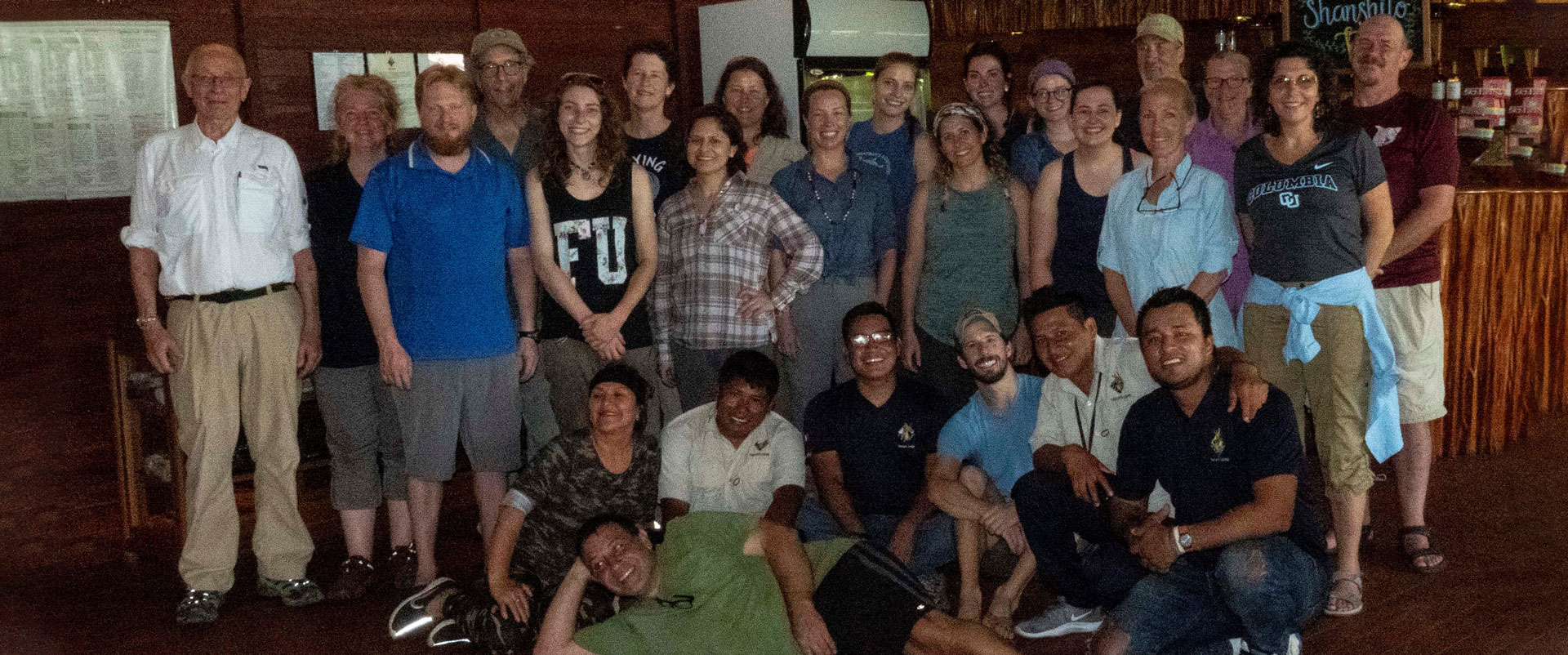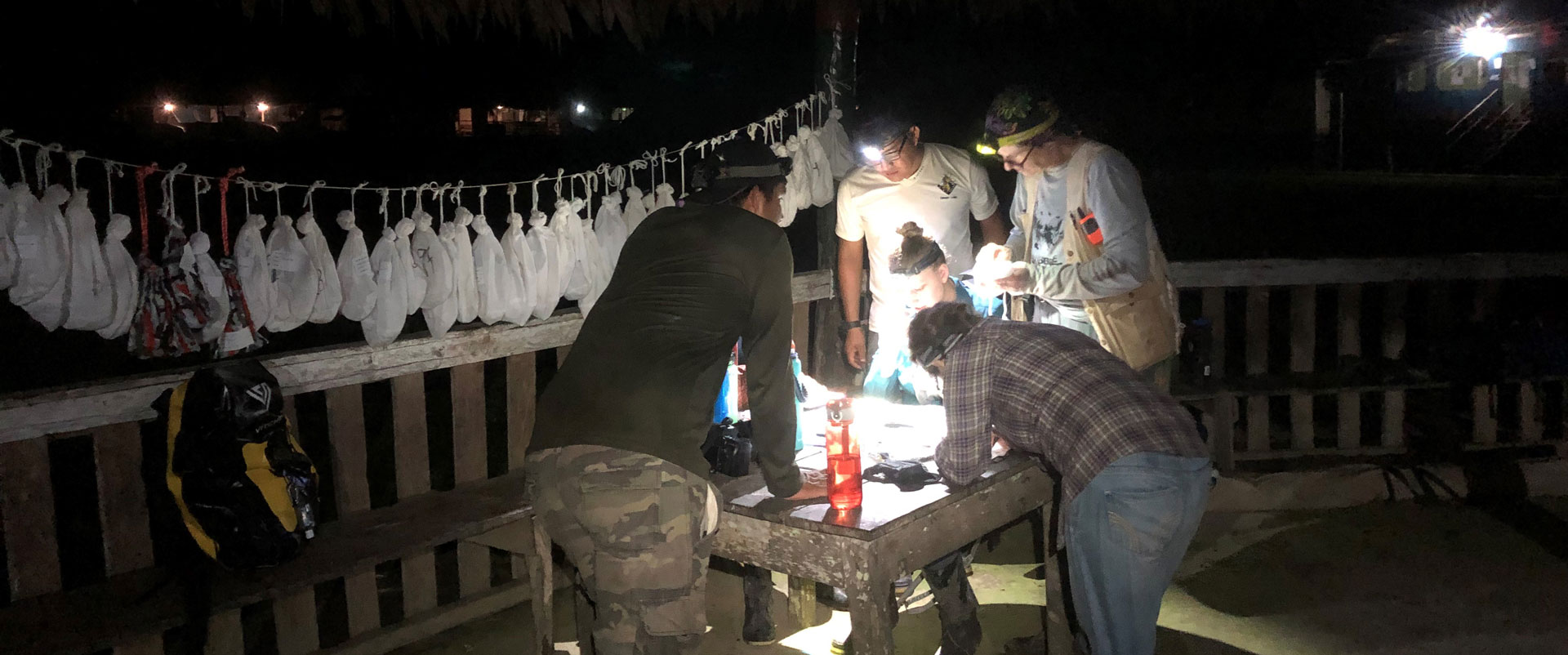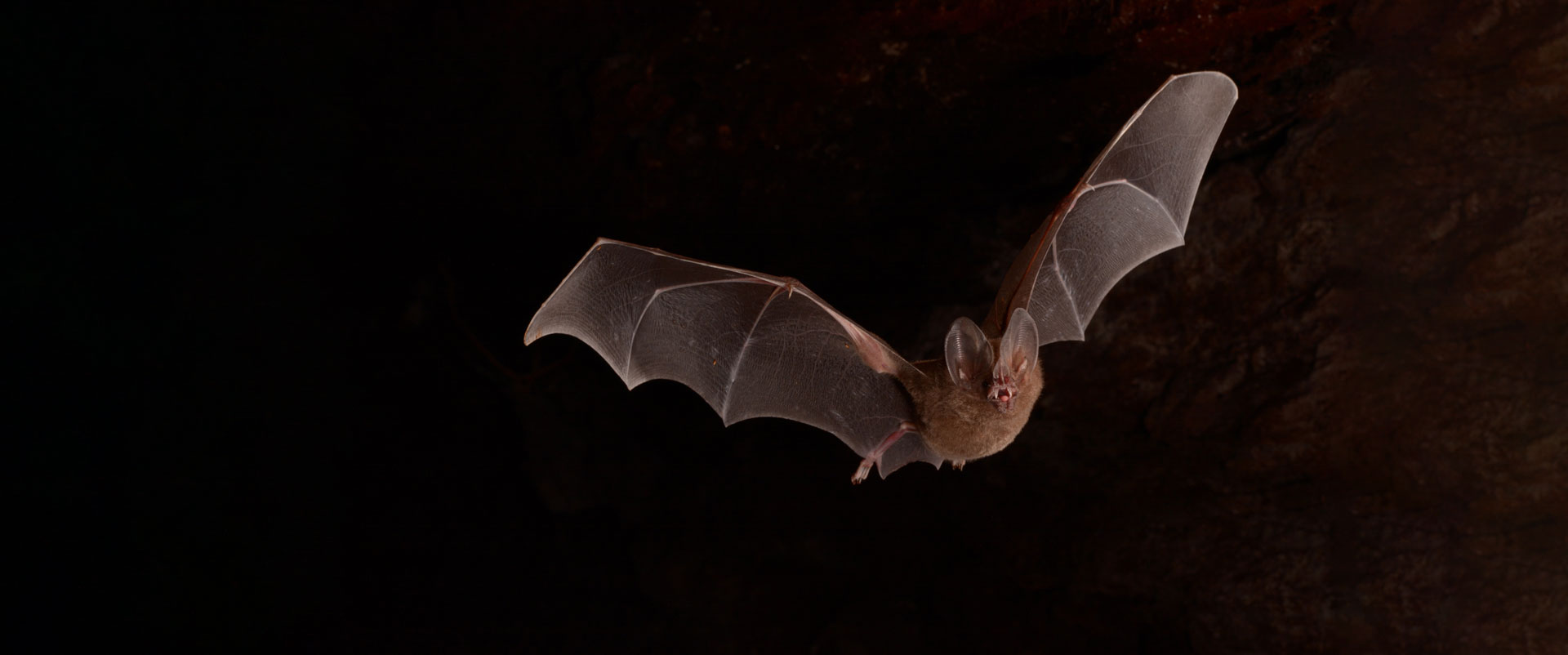
Bat researchers at the Tahuayo Lodge (photo: Brock and Sherri Fenton)
In February we hosted a group of bat researchers, some from the American Museum of Natural History. During five nights of mist netting, 36 bat species belonging to five different families were identified, showing once more the great diversity of the ACRCTT conservation zone. Bats were captured at several sites near the main lodge, as nets were set at different heights, as well as harp traps. Additionally, several roosts were identified, and some bats were hand caught. We found bats roosting in the school at El Chino village (mastiff bat Molossus molossus), as well at the central community house (hoary bat Lasiurus ega) and in young Heliconia leaves (disc-winged bat Thyroptera tricolor).

Studying bats in El Chino village (photo: Derek Morningstar)
One night was especially exiting for everyone. Nets were set up around a fallen tree and the remaining holes covered with plastic tarps. The tree was home to at least five bat species. Most of the species were reproducing, which makes the log especially important to preserve as a bat nursery. Additionally, we were able to collect bat flies (small exoparasites feeding on the bat’s blood) and their pupae in the fallen tree.

Frog-eating bat Trachops cirrhosus flying out of its roost in a fallen tree (photo: Derek Morningstar)
Both researchers and Amazonia Expeditions staff were amazed by the diversity of bats. We are very happy to contribute to the investigation of bats in the Tahuayo area and help promote knowledge about the species diversity here.
-Malika Gottstein
Research Associate, Amazonia Expeditions

I am definitely not a bat researcher but I got to tag along with the AMNH scientists and researchers on the catch night at the fallen tree and it was one of the most exciting adventures I have ever experienced! I hope to make it back to the Lodge one day soon.